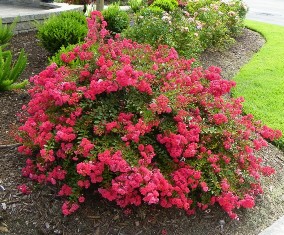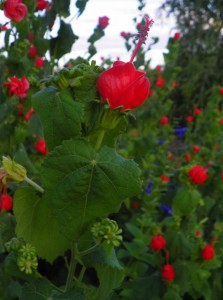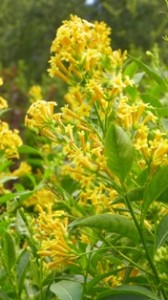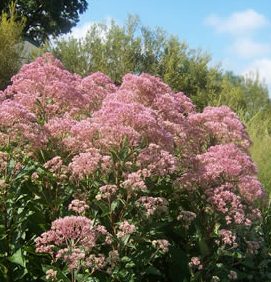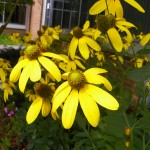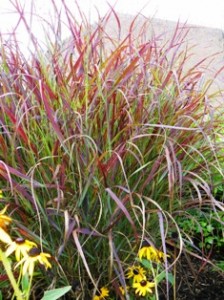Landscape Gold Medal Winners
go.ncsu.edu/readext?168551
en Español / em Português
El inglés es el idioma de control de esta página. En la medida en que haya algún conflicto entre la traducción al inglés y la traducción, el inglés prevalece.
Al hacer clic en el enlace de traducción se activa un servicio de traducción gratuito para convertir la página al español. Al igual que con cualquier traducción por Internet, la conversión no es sensible al contexto y puede que no traduzca el texto en su significado original. NC State Extension no garantiza la exactitud del texto traducido. Por favor, tenga en cuenta que algunas aplicaciones y/o servicios pueden no funcionar como se espera cuando se traducen.
Português
Inglês é o idioma de controle desta página. Na medida que haja algum conflito entre o texto original em Inglês e a tradução, o Inglês prevalece.
Ao clicar no link de tradução, um serviço gratuito de tradução será ativado para converter a página para o Português. Como em qualquer tradução pela internet, a conversão não é sensivel ao contexto e pode não ocorrer a tradução para o significado orginal. O serviço de Extensão da Carolina do Norte (NC State Extension) não garante a exatidão do texto traduzido. Por favor, observe que algumas funções ou serviços podem não funcionar como esperado após a tradução.
English
English is the controlling language of this page. To the extent there is any conflict between the English text and the translation, English controls.
Clicking on the translation link activates a free translation service to convert the page to Spanish. As with any Internet translation, the conversion is not context-sensitive and may not translate the text to its original meaning. NC State Extension does not guarantee the accuracy of the translated text. Please note that some applications and/or services may not function as expected when translated.
Collapse ▲Extreme heat, erratic rainfall, and prolific pests turn southern landscapes into Olympic arenas each summer, where the goal for plants from all over the world is simply to survive. Any plant that can make it through to August still looking decent is definitely tough. Those that look great undeniably deserve a gold medal. If late summer finds your yard looking a little worse for the wear, add some of these landscape champions and expect years of stellar performances.
Above and Beyond
Plants that thrive on heat and humidity, waiting until the dog days of summer to put their best foot forward, definitely go above and beyond the call of duty. Among well known landscape plants crape myrtles certainly fall into this category, but if all you picture are trees when you think crape myrtle, get ready to expand your mind. The new Cherry Dazzle® crape myrtle is a true shrub, forming tight mounds that grow 3’-4’ tall and wide and are covered in intense red flowers throughout July and August. Dark green, disease free leaves provide the perfect foil to these bright blossoms and provide interest in the fall by turning red themselves. Just as tough as any crape myrtle tree, plant this drought tolerant, deer resistant shrub any sunny place you need hot summer color.
For extreme drought tolerance coupled with profuse flower production, you can’t beat wax mallow, Malvaviscus drummondii. This shrubby perennial’s upward facing, bright red flowers never fully open, yet attract flocks of hummingbirds and butterflies. Plants grow 4’ to 5’ tall and wide and bloom from June through October. Though more compact and heavier flowering in full sun, wax mallow also does surprisingly well in part shade. Almost never bothered by deer, wax mallow thrives in sandy soil and looks great with other drought tolerant standbys like ‘New Gold’ lantana and the silver leaved ‘Powis Castle’ Artemisia.
If you are looking for a perennial that will soar to new heights, seek out ‘Orange Peel’ Cestrum. Growing 6’-8’ tall and 3’-4’ wide, this vertically liberated perennial looks like a butterfly bush on steroids. Clusters of glowing, golden orange blossoms top every stem and are sweetly fragrant, especially in the evening. A great plant for butterflies, ‘Orange Peel’ Cestrum thrives in full sun or part shade, grows in clay or sand, and is almost never bothered by deer. Though this plant grows as a shrub in milder climates, in our area it is best treated as a perennial and cut back to ground level each winter.
The Home Team
You don’t have to look to foreign lands to findexceptional plants for summer color. Quite a few are native to our roadsides and woodland edges. One that amazes me each year is the coastal species of Joe Pye Weed, Eupatorium dubium, which bursts into blossom in the heat of August. Dome shaped clusters of lavender pink flowers are produced atop 4’-5’ tall stems and are a magnet for butterflies. Coastal Joe Pye Weed thrives in sunny areas with moist soil and will even tolerate occasional flooding. The recent introduction of the variety ‘Little Joe’ has made this plant more readily available from local garden centers.
Cutleaf coneflower, Rudbeckia laciniata, is a native perennial that really brings home the gold, in the form of golden yellow flowers. This Black-eyed Susan relative grows 5’-6’ tall and blooms prolifically in sun or part shade. Plants growing in full sun stand up straight and tall, while those in the shade tend to be a little floppy, in a charming rather than messy way. The selection ‘Herbstonne’ is unsurpassed, producing extra large blossoms all summer long. This tough perennial grows well in clay or sandy soils, but benefits from extra water in very sandy sites.
Panic grass, Panicum virgatum, is another hometown hero at peak performance in late summer. Several selections of this clump forming perennial grass are available, including ‘Cloud Nine’, a personal favorite that grow 6’ to 8’ tall, ‘Northwind’, a narrowly upright variety that reaches 5’ in height, and ‘Prairie Fire’, one of the smallest, growing only 3’-4’ tall with ruby red leaves. Like most ornamental grasses, panic grass does best in full sun, is deer resistant, and is not fussy about soil type.
Learn More
Visit your local Extension office to learn about more great landscape plants. Master Gardener Volunteers tend display gardens at the Extension offices in Pender and Brunswick County, as well as at Extension’s six acre New Hanover County Arboretum located at 6206 Oleander Drive in Wilmington. Find your local office online at https://www.ces.ncsu.edu/, where you can also post your questions to be answered through our ‘Ask an Expert’ widget.




